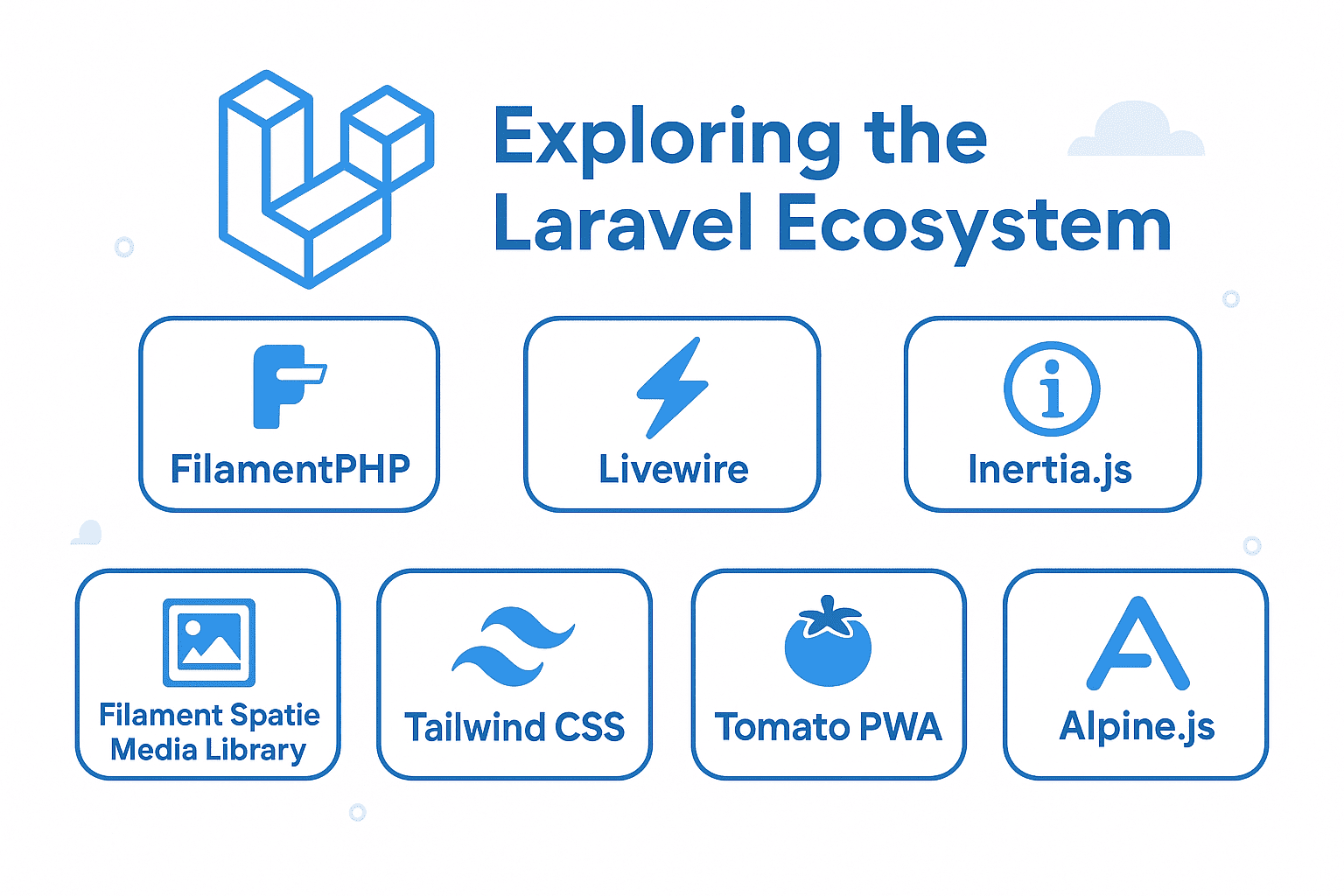Laravel, renowned for its elegant syntax and robust features, has grown into a thriving ecosystem that empowers developers to build scalable, modern web applications. From its core functionalities to a vast array of packages and plugins, the Laravel ecosystem is designed to streamline development workflows, enhance productivity, and adapt to evolving project needs. In this blog, we’ll delve into the core components of Laravel and highlight some of my top-used plugins/libraries that have become essential in my toolkit.
The Laravel Core: Foundation of Modern Web Apps
Laravel’s strength lies in its clean, expressive PHP framework that simplifies common tasks like routing, authentication, and database interactions. Key features include:
- Eloquent ORM: A powerful yet intuitive way to interact with databases.
- Blade Templates: Simple, secure templating for dynamic HTML pages.
- Routing & Middlewares: Flexible routing with robust middleware support.
- Queue and Task Scheduling: Efficient handling of background jobs and recurring tasks. These core features make Laravel a go-to choice for building both small projects and enterprise-scale applications. However, the real magic happens when combined with its extensive ecosystem of tools and third-party packages.
Top Plugins & Libraries for Laravel Developers
Below is a curated list of my most-used plugins and libraries that have revolutionized how I build and maintain Laravel applications.
1. FilamentPHP
Purpose: A full-featured, modern admin panel framework for Laravel.
FilamentPHP is my go-to tool for creating sleek, responsive admin interfaces. It abstracts much of the boilerplate code required for CRUD operations and offers a component-driven approach to build dashboards, forms, and data tables. It integrates seamlessly with Laravel’s ecosystem and supports features like authentication, file management, and API generation out of the box.
2. Livewire
Purpose: Real-time, server-side interactivity without leaving the page.
Livewire simplifies building dynamic interfaces by enabling stateful components and real-time updates without requiring a full front-end framework. It’s ideal for forms, modals, and interactive dashboards, making it a perfect fit for Laravel projects where performance and simplicity are key.
3. Inertia.js
Purpose: Bridging Laravel with React, Vue, or other front-end frameworks.
Inertia.js allows you to build single-page applications (SPAs) using Laravel as the backend. It leverages Vue or React for front-end interactivity while keeping your Laravel routes and controllers intact. This is a game-changer for developers aiming to combine the power of Laravel with modern front-end frameworks.
4. Filament Spatie Media Library
Purpose: A plugin for managing media files in Filament.
This plugin extends FilamentPHP’s capabilities by adding a robust media library for uploading, organizing, and embedding images, videos, and files. It’s a must-have for projects requiring rich media management without writing complex code.
5. Tailwind CSS
Purpose: A utility-first CSS framework for rapid front-end development.
Tailwind CSS has become a staple in my projects due to its ease of use and flexibility. It pairs well with Laravel’s Blade templates, allowing for quick styling without relying on a CSS framework like Bootstrap. Combined with Laravel’s blade directives, it enables responsive, production-ready designs in no time.
6. Tomato PWA (Filament Plugin)
Purpose: Enabling Progressive Web App features in Filament.
This plugin adds PWA capabilities to Filament admin panels, allowing your Laravel application to function like a native app on mobile devices. Features like offline support, push notifications, and install prompts enhance user experience for mobile-first projects.
7. Alpine.js
Purpose: Lightweight JavaScript for adding interactivity to your Laravel app.
Alpine.js is my preferred choice for simple, lightweight front-end interactivity without the overhead of full frameworks. It’s perfect for toggling dropdowns, forms, and animations while keeping your Laravel application thin and fast.
Why These Tools Stand Out
Each of these tools addresses a specific pain point in Laravel development:
- FilamentPHP and its plugins streamline admin panel creation.
- Livewire and Inertia.js cater to different front-end approaches, from server-rendered pages to SPAs.
- Tailwind CSS and Alpine.js ensure your front-end remains modern, maintainable, and performant.
The Laravel ecosystem thrives on its adaptability, allowing developers to mix and match tools to suit their project’s unique needs. Whether you’re building a RESTful API, a dashboard, or a full-featured PWA, the right combination of these plugins can drastically reduce development time and improve application quality.
Final Thoughts
The Laravel ecosystem is a testament to the framework’s flexibility and community-driven innovation. While Laravel itself provides a solid foundation, its true power lies in the libraries and plugins that extend its capabilities. By leveraging tools like FilamentPHP, Livewire, Inertia.js, and Tailwind CSS, developers can build applications that are not only functional but also modern, scalable, and user-friendly.
As Laravel continues to evolve, staying updated with its ecosystem ensures you’re always equipped to tackle the latest challenges in web development. Happy coding! 🚀
do you have a project and want to use Laravel ecosystem contact me via email, linkedin, or through DSRPT



